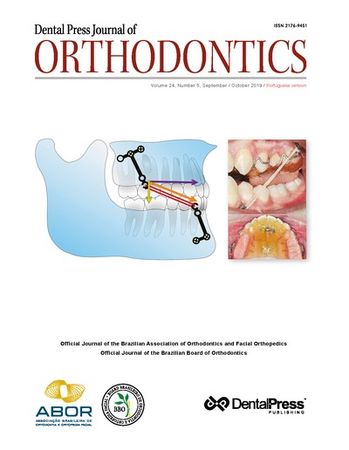
Seu carrinho está vazio!


Preventive and interceptive orthodontics has the purpose of preventing or alleviating occlusal problems that might be happening in the transition period from deciduous to permanent dentition. In the spectrum of available procedures, we can include from the prevention of interproximal cavity, with the intention of maintaining arch length, all the way to two-phase orthodontic treatment, where the first phase is performed in the mixed dentition with the intention of promoting increased skeletal...

The replacement of natural teeth that have extreme external apical root resorption, induced by orthodontic treatment, with osseointegrated implants is not justifiable biologically or clinically. These teeth should be preserved and keep their normal functions, as there is no greater mobility, pain or color change. They may undergo usual procedures, such as bleaching, restorations with veneers and other esthetic procedures that may be necessary along life. The pulp of these teeth is normal. If...

Objective: To evaluate the effect of using sodium hypochlorite (NaOCl) on the bond characteristics of orthodontic metal brackets bonded to enamel surface using three adhesive systems. Methods: One hundred twenty premolars were selected and randomly divided into two equal groups of 60 teeth/ each (Groups I and II). The teeth of Group I were left untreated while those of Group II were exposed to 5.25% NaOCl for 1 minute. The teeth in either group were randomly subdivided into three equal...

Objective: This study aimed at comparing the dentoskeletal changes in patients with Class II division 1 malocclusion, treated with three types of fixed functional appliances. Methods: A sample comprising 95 patients with the same malocclusion, retrospectively selected, and divided into four groups, was used: G1 consisted of 25 patients (mean age 12.77 ± 1.24 years) treated with Jasper Jumper appliance; G2, with 25 patients (mean age 12.58 ± 1.65 years) treated with the Herbst appliance;...

Objective: The aim of this study was to estimate the changes in the palate area after rapid maxillary expansion (RME) with the Hyrax expander in growing subjects, using cone beam computed tomography (CBCT). Methods: Fourteen patients (9 girls and 5 boys; mean age = 11.7 ± 2.4 years) who required RME as part of their orthodontic treatment were included in this study. CBCT records had been taken before RME treatment (T0), at the end of active expansion (T1) and after a 6-month retention period...

Introduction: Anchorage conservation in orthodontics has always been a challenge. Objective: The aim of this current study was to find out the failure rate of miniscrews inserted in the maxillary tuberosity (MT) region. Methods: This pilot study consisted of 40 patients (23 female, 17 male; mean age = 20.1±8.9 years) that had received 60 MT miniscrews for orthodontic treatment. Clinical notes and pictures were used to find out the primary outcome of miniscrew failure. Independent failure...

Introduction: Skeletal Class III malocclusion is one of the most challenging malocclusions to treat. In around 40% of Class III patients, maxillary retrognathia is the main cause of the problem and in most patients, orthopedic/surgical treatments includes some type of maxillary protraction. Objective: The aim of this case report was to describe a treatment method for a patient with maxillary retrognathia and Class III skeletal discrepancy using mandibular and maxillary skeletal anchorage...

Objective: To assess the volume and morphology of the middle region of the pharynx (MRP) in adolescents with different anteroposterior craniofacial skeletal patterns. Methods: One hundred twenty-six patients (56 male and 70 female), who had cone-beam computed tomography (CBCT) within their records, were selected for this cross-sectional study. Participants were classified, according to their ANB angle value, in Class I (1o ≤ ANB ≤ 3o), Class II (ANB > 3o) and Class III (ANB < 1o)....

Anterior open bite (AOB) is characterized by the lack of overlap or contact between maxillary and mandibular incisors, while the posterior teeth are in occlusion. Correction of this malocclusion is challenging due to difficulties in determining and addressing the etiologic factors, and the high relapse rate. A multidisciplinary approach may be necessary, with participation of Orthodontics, Surgery and Speech Therapy, to achieve adequate esthetic and functional results for long term...

The principles of orthodontic mechanics strongly influence the success of impacted canine traction. The present studydiscusses the main imaging exams used for diagnosis and localization of impacted canines, the possible associated etiologicalfactors and the most indicated mechanical solutions

Copyright © 1998 - 2022 DentalGO | Todos Direitos Reservados. DentalGO é uma marca Dental Press